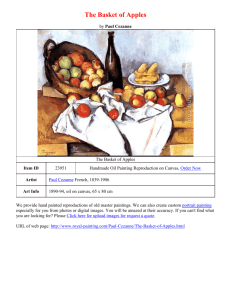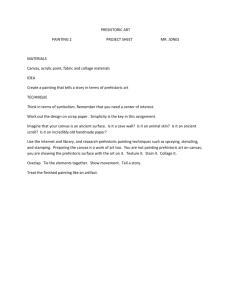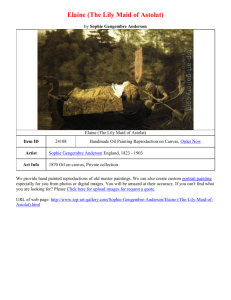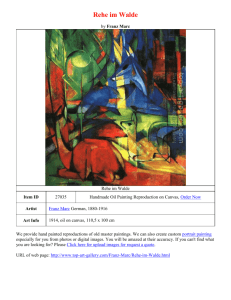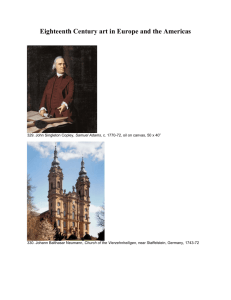abstract
advertisement
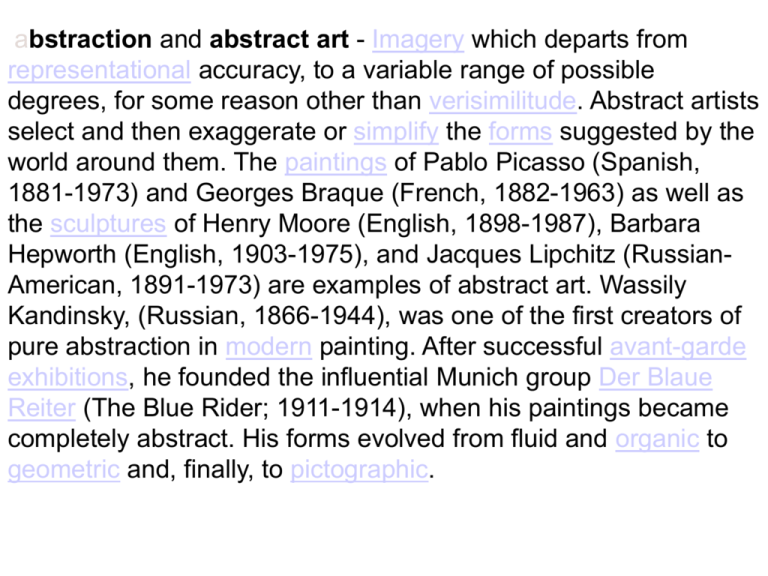
abstraction and abstract art - Imagery which departs from representational accuracy, to a variable range of possible degrees, for some reason other than verisimilitude. Abstract artists select and then exaggerate or simplify the forms suggested by the world around them. The paintings of Pablo Picasso (Spanish, 1881-1973) and Georges Braque (French, 1882-1963) as well as the sculptures of Henry Moore (English, 1898-1987), Barbara Hepworth (English, 1903-1975), and Jacques Lipchitz (RussianAmerican, 1891-1973) are examples of abstract art. Wassily Kandinsky, (Russian, 1866-1944), was one of the first creators of pure abstraction in modern painting. After successful avant-garde exhibitions, he founded the influential Munich group Der Blaue Reiter (The Blue Rider; 1911-1914), when his paintings became completely abstract. His forms evolved from fluid and organic to geometric and, finally, to pictographic. verisimilitude - Appearing to be true or real. Philip Pearlstein (American, 1924-), Two Models on a Kilim Rug with Mirror, 1983, oil on canvas, Picasso Henry Moore Jacques Lipchitz Nancy Graves Wassily Kandinsky Katherine Dreier (American, 1877-1952), Abstract Portrait of Marcel Duchamp, Paul Strand (American, 1890-1976), Abstraction, Twin Lakes, Connecticut, Gerhard Richter (German, 1932-), Abstract Painting No. 439, 1978, oil on canvas Gerhard Richter, G.A.4 (21.1.84), 1984, colored inks, watercolor, pencil and crayon on paper, Gerhard Richter, Breath, 1989, oil on canvas, Sam Gilliam (American, 1933-), Abstraction, 1969, acrylic on aluminumtreated paper. Taylor _____ (American, contemporary, at 10 years old), House Cat, from Realistic to Abstract, 2005, colored pencils on paper, Abstract Expressionism or abstract expressionism - A painting movement in which artists typically applied paint rapidly, and with force to their huge canvases in an effort to show feelings and emotions, painting gesturally, non-geometrically, sometimes applying paint with large brushes, sometimes dripping or even throwing it onto canvas. Their work is characterized by a strong dependence on what appears to be accident and chance, but which is actually highly planned. Some Abstract Expressionist artists were concerned with adopting a peaceful and mystical approach to a purely abstract image. Usually there was no effort to represent subject matter. Not all work was abstract, nor was all work expressive, but it was generally believed that the spontaneity of the artists' approach to their work would draw from and release the creativity of their unconscious minds. The expressive method of painting was often considered as important as the painting itself. Mark Rothko, N° 14 (Browns over Dark), 1963, oil and acrylic on canvas Arshile Gorky, Composition, 1936-1939, oil on canvas, Willem de Kooning, Seated Woman, 1952, pastel, pencil, and oil on two hinged sheets of paper, Willem de Kooning, Women Singing II, 1966, oil on paper laid on canvas, Barnett Newman, Pagan Void, 1946, oil on canvas, David Smith, Becca, 1965, stainless steel, Franz Kline, Untitled, c. 1954, oil on paper, Franz Kline, Siskind, 1958, oil on canvas, Jackson Pollock (American, 19121956), Naked Man with Knife, c. 1938-40, oil on canvas, Jackson Pollock, The Moon-Woman Cuts the Circle, 1943, oil on canvas, Jackson Pollock, Night Mist, 1945, oil on canvas, Jackson Pollock, One (Number 31, 1950), 1950, oil and enamel on unprimed canvas, 8 feet 10 inches x 17 feet 5 5/8 inches •"All painting, no matter what you are painting, is abstract in that it's got to be organized." David Hockney (1937-), English painter and photographer. •"Abstract paintings must be as real as those created by the 16th century Italians." Frank Stella (1936-), American artist. •"Abstraction allows man to see with his mind what he cannot physically see with his eyes. . . . Abstract art enables the artist to perceive beyond the tangible, to extract the infinite out of the finite. It is the emancipation of the mind. It is an explosion into unknown areas." Arshile Gorky (1904-1948), Armenian-born American Abstract Expressionist painter. Roy Lichtenstein (American, 1923-1997), the six prints in the "Bull Profile Series," Bull I, (the most figuratively representational image of the six)
